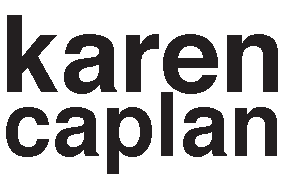Meetings, meetings, meetings. Some days it seems like a blur of meetings.
Whether they are meetings you chair, or meetings in which you are a participant, meetings can go either way. Either they feel like a good use of your time, and you feel satisfied, or you are thinking that you just invested your valuable time and got little to nothing.
As with most occurrences, I’m a big believer in creating a system and process for meetings. The system I developed was honed over many years of working inside my company, volunteering in organizations, and serving on boards.
To me, there are three critical parts to a successful meeting:
- Send an agenda (via email) ahead of time and make sure you have the correct people invited to the meeting.
- Take your own notes during the meeting in a separate document that you date and title, so you can refer to it later.
- Create an “action items” list at the end of your document with the person responsible, task and due date.
Tempted to invite every manager or a bunch of team members to a meeting so they are “in the loop”? Maybe they don’t all need to be invited, and you can just send out a recap afterwards. As someone who tends to include too many people at meetings (that’s me), I had to learn that making people feel included by inviting them to meetings created more problems. Too many people at a meeting, can create delays as everyone feels like they need to weigh in. Maybe people aren’t attentive during the meeting because they are asking themselves “why am I here?” Too big a group causes side conversations.
Attending a meeting and not take your own notes? How are you going to remember important points of the discussion? Science proves that by writing (taking notes by hand) you are more likely to remember what went on. Reading someone else’s notes (like the administrator or note taker) is not as effective . They may get the words down on paper, but they may not capture the substance you would from making your own notes. **And if you take your notes on your laptop, turn off your email, or else you can easily get distracted since you have your laptop open.
How many times did you leave a meeting and ask yourself, “Who is supposed to follow up on that?” “What am I supposed to do, and by when?” A good chair of a meeting will recap all of the action items at the end.
- What needs to be done
- By whom
- By when
It may seem tedious and unnecessary, but everyone hears and retains differently. If you want to have effective meetings, then be clear about what the next steps are.
If you are considering implementing this process in your organization, be sure to share your expectations with your team. Do they have to take their own notes? Do they need to report back on action items? I encourage anyone I work with to develop a practice of self-managing, instead of delegating that back to me.
**When I ran my wholesale produce company, I carried a spiral notebook with me everywhere. I dated each page and took all my notes for all meetings there, chronologically. That allowed me to page back and forth when I wanted to remind myself of when something happened, who I met with and what was discussed. I also had the action item list right there, too.
It’s easy to try this system for yourself. Who knows, maybe you will capture back more time on your calendar as you realize you don’t need to be in so many meetings
Onward and Upward,

If you’re enjoying what you’re reading, please consider recommending it to others. They can sign up here





